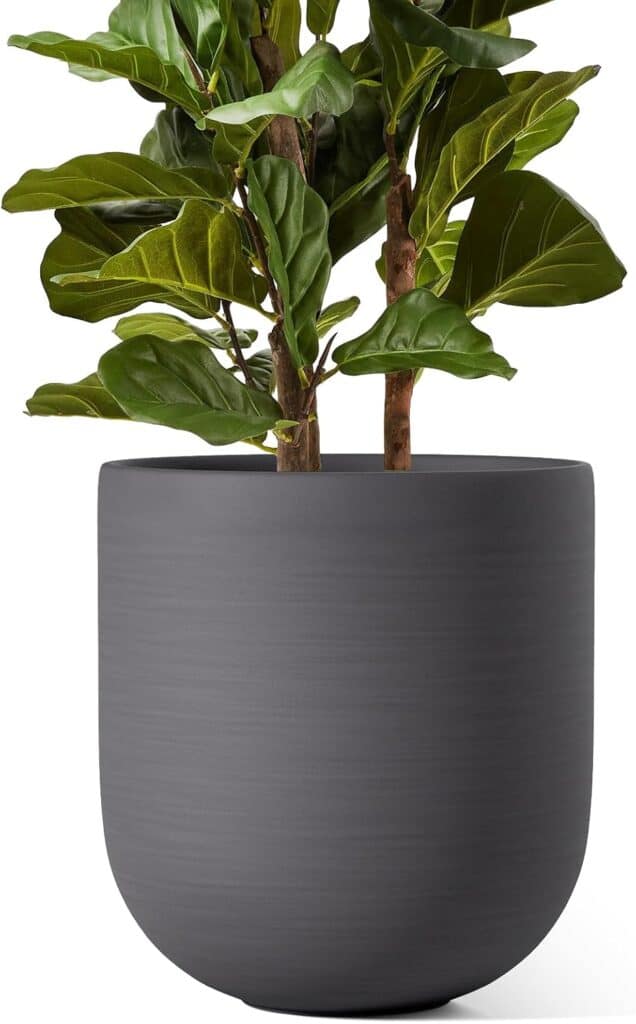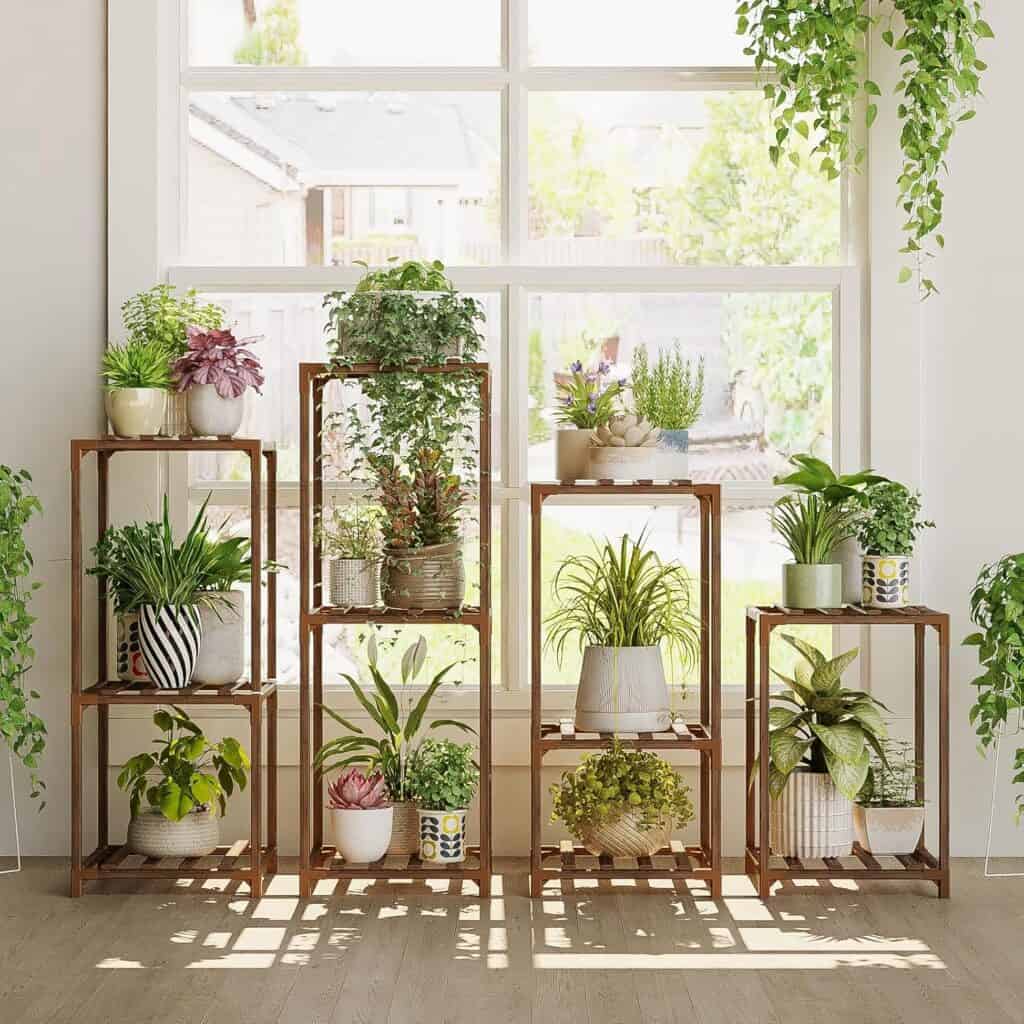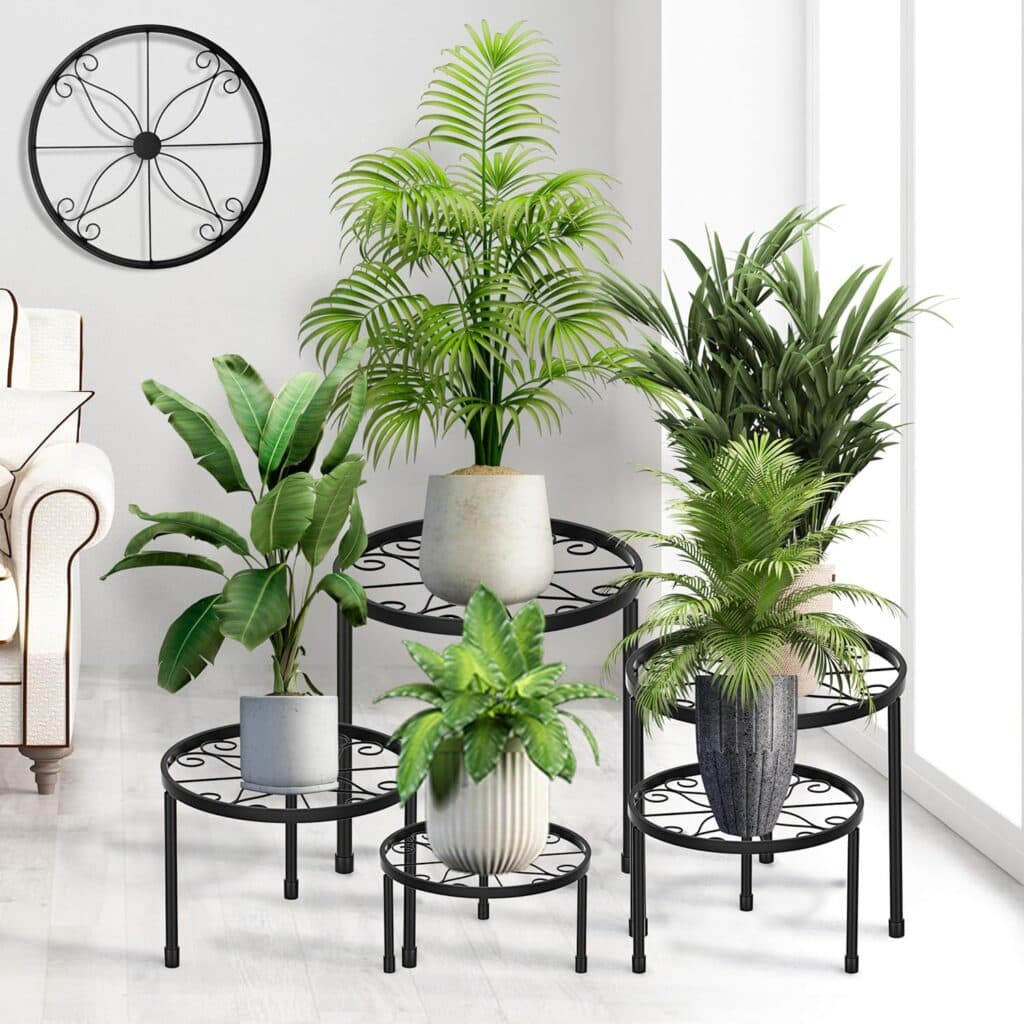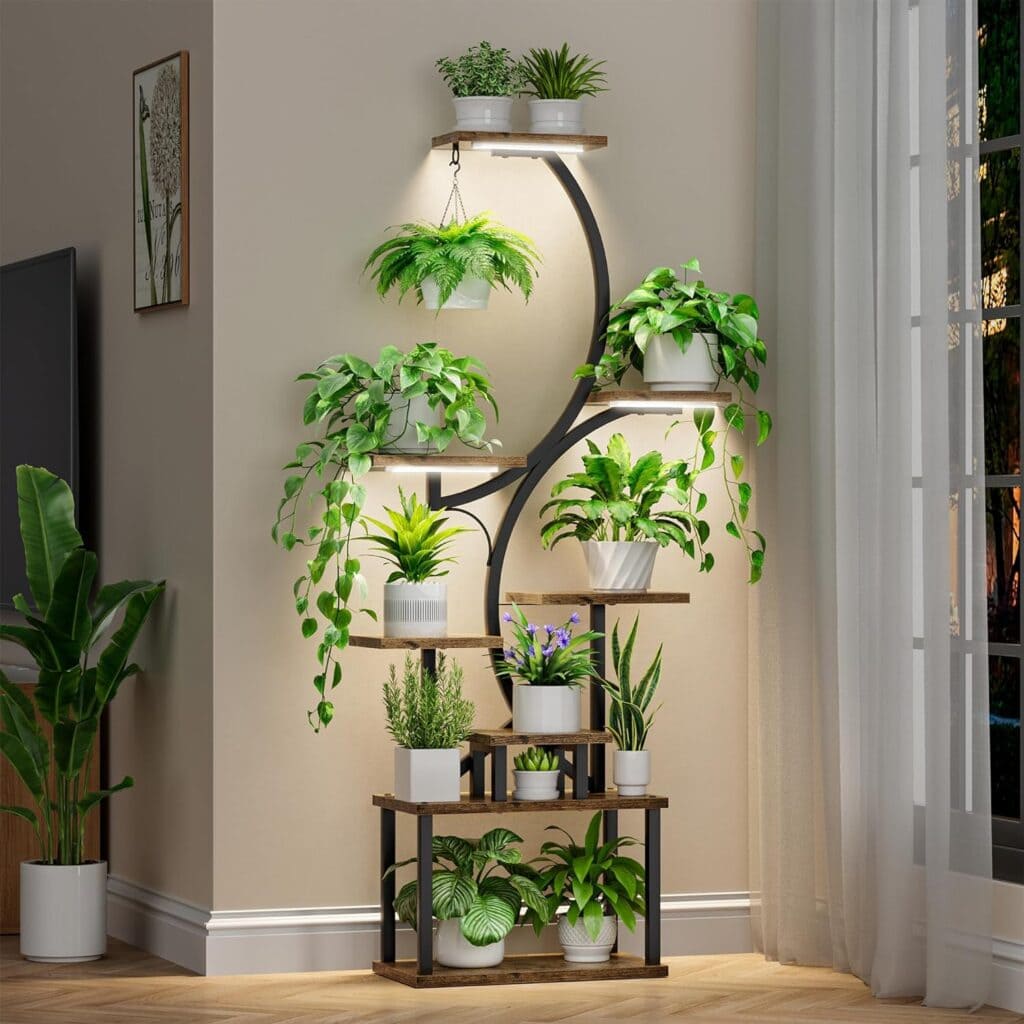How to create a healthy home with plants.
Did you know that the air inside your home can be up to five times more polluted than the air outside? Yikes! This is why it’s so important to have plants in your home – these mighty air cleaners detoxify the air and make it healthier for you to breathe.
So, here we will discuss the top ten plants that are best for air purification.
We’ll talk about what toxins are in the home, what we can do to limit them from coming in and how plants can help detoxify the air and improve your health!
But, first… why do we need to clean the air in our homes in the first place?
What Toxins Can Be Found In The Home?
It’s no secret that the air quality inside the modern home is full of toxins.
Most homes are full of chemicals, both natural and artificial.
Cleaning products alone contain a plethora of chemicals, from bleaches and disinfectants to solvents and scouring agents.
Then, there are personal care products, such as shampoo, soap, and makeup, which also contain a variety of chemicals.
There are also all of the fragrances that we use. Everything from scented candles, plug-ins to cologne and perfume.
Even the material to build our homes can off-gas for quite some time.
In fact, it’s almost impossible to avoid chemicals entirely.
However, by being aware of the types of chemicals that are commonly found in homes, we can take steps to reduce our exposure to them.
One of these steps is to add plants to your home.
So What Can We Do To Reduce The Toxins In Our Homes?
There are a few simple steps that you can take to reduce your exposure and create a healthier environment for you and your family.
One of the easiest ways to detox your home is by switching to natural cleaning products.
Look for cleaners made with natural ingredients like vinegar, baking soda, and essential oils. You can find a few here.
Or better yet, make your own!
I wrote a post here about how to make your own cleaning products to help limit the load of chemicals in the home.
Another way to reduce toxins in your home is by carefully choosing the products you bring into it.
When shopping for furniture, look for items made from sustainable materials like bamboo or wool.
Avoid plastics whenever possible, as they can off-gas harmful chemicals like phthalates and BPA.
Get the dust up! Since most of these toxins land in house dust, use a wet cloth to wipe down surfaces often.
Instead of using air fresheners, you can make your own stovetop potpourri recipes.
You can also reduce the amount of toxins released into the air by opening windows and using fans to improve ventilation.
By following these simple tips, you can make a big difference!
Why Do Plants Clean The Air?
In 1989, NASA published a well-known study where researchers found that indoor plants were able to eliminate cancer-causing volatile organic compounds like formaldehyde and benzene from the air.
Another study published in 2004 found that microorganisms in soil used for common house plants play a role in filtering indoor air quality.
Not only do plants improve the air quality in your home and reduce the health risks associated with exposure to toxins. but they can also boost your mood and reduce stress levels.
So if you’re looking for a way to improve your health and wellbeing, adding some plants to your home is a great place to start!
Top Ten Plants for Improving Indoor Air Quality
Here are the top ten best air-filtering plants that are best for improving indoor air quality.
It is recommended that you have one indoor plant per 100 sf.
Aloe Vera Plant
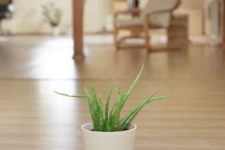
Who doesn’t like a good aloe vera plant?
Aloe vera plants are not only attractive and easy to care for, but they also serve an important purpose in the home.
These hardy plants are able to remove harmful chemicals from the air, helping to create a healthier environment.
One of the most common chemicals removed by aloe vera plants is formaldehyde, which is found in many household cleaning products and building materials.
Additionally, these plants can also filter out benzene and other pollutants.
In order to thrive, aloe vera plants need bright light and well-drained soil.
However, they are relatively low-maintenance and can even tolerate periods of neglect.
As a result, these Plants make an ideal choice for busy households.
Spider Plant

The spider plant is a popular houseplant that is known for its ability to remove harmful chemicals from the air.
According to research, the spider plant can remove up to 90% of volatile organic compounds (VOCs) from the air. VOCs are found in a variety of household products, such as cleaning supplies, paint fumes, and even some fabrics.
It is also effective at removing carbon monoxide and formaldehyde from the air.
In terms of light, the spider plant does best in bright, indirect light. However, it can also tolerate low light conditions.
Snake Plant (Mother-in-Law’s Tongue)

The snake plant, also known as the mother-in-law’s tongue (because of the sharp edges!), is a popular houseplant that is known for its ability to remove toxins from the air.
The plant specifically targets chemicals such as formaldehyde, nitrogen dioxide and sulfur dioxide.
These chemicals are found in cleaning products, carpets, pressurized cans and tobacco smoke.
The snake plant is very effective at removing these toxins, and it only needs moderate amounts of light to thrive.
Golden Pothos

The golden pothos is a beautiful, heart-shaped leafy plant that is often seen gracing the shelves of homes and offices.
But this unassuming plant is not just a pretty face – it also happens to be a powerhouse when it comes to chemical removal.
Golden pothos has been shown to effectively remove a variety of harmful chemicals from the air, including formaldehyde, benzene and trichloroethylene.
These chemicals are commonly found in cleaning products, paint strippers and pressed wood furniture, making the golden pothos an ideal plant for improving indoor air quality.
In terms of light, it is surprisingly tolerant – it can thrive in both low-light and bright conditions.
So whether you’re looking to add a touch of green to a dark corner or brighten up a sun-drenched room, this is a great option.
Peace Lily

The peace lily is a popular houseplant for a reason: it’s easy to take care of and it helps to purify the air.
NASA research has shown that the peace lily is effective at removing several common household chemicals, including benzene, formaldehyde and trichloroethylene.
These chemicals can be found in everything from cleaning products to paints and varnishes, making them difficult to avoid entirely.
However, by keeping a peace lily in your home, you can help to mitigate their harmful effects.
The peace lily prefers indirect sunlight and should be watered about once a week.
With just a little bit of care, this beautiful plant can help to create a healthier environment for you and your family.
Boston Fern

The Boston Fern is a common houseplant that is known for its ability to remove harmful chemicals from the air.
According to studies, the plant is especially effective at removing formaldehyde, a common indoor pollutant that is found in carpeting, furniture, and cleaning products.
The plant also removes other pollutants, such as benzene and trichloroethylene, which can be found in paint, pesticides, and cigarette smoke.
In order to be effective, the plant needs to be placed in an area with good airflow and exposure to light.
However, it is important to avoid direct sunlight, as this can damage the plant’s leaves.
Chrysanthemum

The chrysanthemum plant is known for its ability to remove a variety of harmful chemicals from the air.
Among the contaminants it can remove are formaldehyde, benzene, and trichloroethylene, all of which are found in many household products.
The plant also helps to reduce levels of mold and bacteria in the air.
In addition to its purifying abilities, the chrysanthemum is also an attractive plant that is relatively easy to care for.
It thrives in bright light but can also tolerate lower light levels.
Rubber Plant

The rubber plant is a popular houseplant that can remove a variety of chemicals, including formaldehyde, benzene, and ammonia.
These chemicals are found in a variety of household products, such as cleaning supplies, paint, and adhesives.
The rubber plant is especially effective at removing formaldehyde, which is commonly used in pressed-wood products.
Don’t place in direct light. The plant does best in bright, indirect light but can also tolerate low light conditions.
Philodendron Monstera

MY FAVORITE!
This tropical plant is not only beautiful, but it’s also very effective at removing harmful chemicals from the air.
Philodendron monstera can remove formaldehyde, benzene and trichloroethylene from the air, all of which are common household toxins.
Formaldehyde is often found in cleaning products, while benzene is a common pollutant in both indoor and outdoor air.
Can also remove Trichloroethylene, which is found in dry-cleaned clothing and adhesives.
Philodendron monstera prefers bright, indirect light and should be watered when the soil is dry to the touch.
Bamboo Palm

The bamboo palm is a popular houseplant for good reason: it’s easy to care for and does a great job of filtering indoor air.
Bamboo palms are effective at removing benzene, formaldehyde and trichloroethylene from the air.
These chemicals are common in household items such as cleaning products, paint fumes and adhesives.
Bamboo palms need bright indirect light to thrive, so they’re an ideal choice for rooms with plenty of windows.
Just be sure to keep them out of direct sunlight, which can scorch their leaves.
Get Some Beautiful Pots!
Now that you know what plants to get, why not jazz them up with some awesome stands and pots!
Get a pot that your plant can grow into.
Here are a few of ones that I have (and ones that I wish I had!)
Plant Stands
There Is An App For That!

If you are new to having plants and you don’t have a green thumb, you bet there is an app for that!
Below is a list of different ones that are so helpful!
You just open the app, take a picture of the plant and it tells you what type it is. It also tells you the correct light and watering schedule. Ah, technology!
- Picture This
- Planty
- NaturalID
- Planze
- Naturale
Conclusion
So there you have it! The top ten plants that are best to improve indoor air quality in your home.
By adding just a few of these air-cleaning plants, you can make a big difference in the health of your family.
And, the best thing is, you don’t need to have a green thumb! These indoor houseplants are very low maintenance and easy to care for.
So, get out there and start your plant collection!
Do you have any favorite air-purifying plants? Share them with us in the comments below!
Want More Tips? Download the Free “7-Day Home Detox Guide”
Looking to make changes in other areas of your home? My free “7-Day Home Detox Guide” offers simple, low-cost steps to make your home healthier, one day at a time.
Get it here to start building a non-toxic lifestyle that works for you!
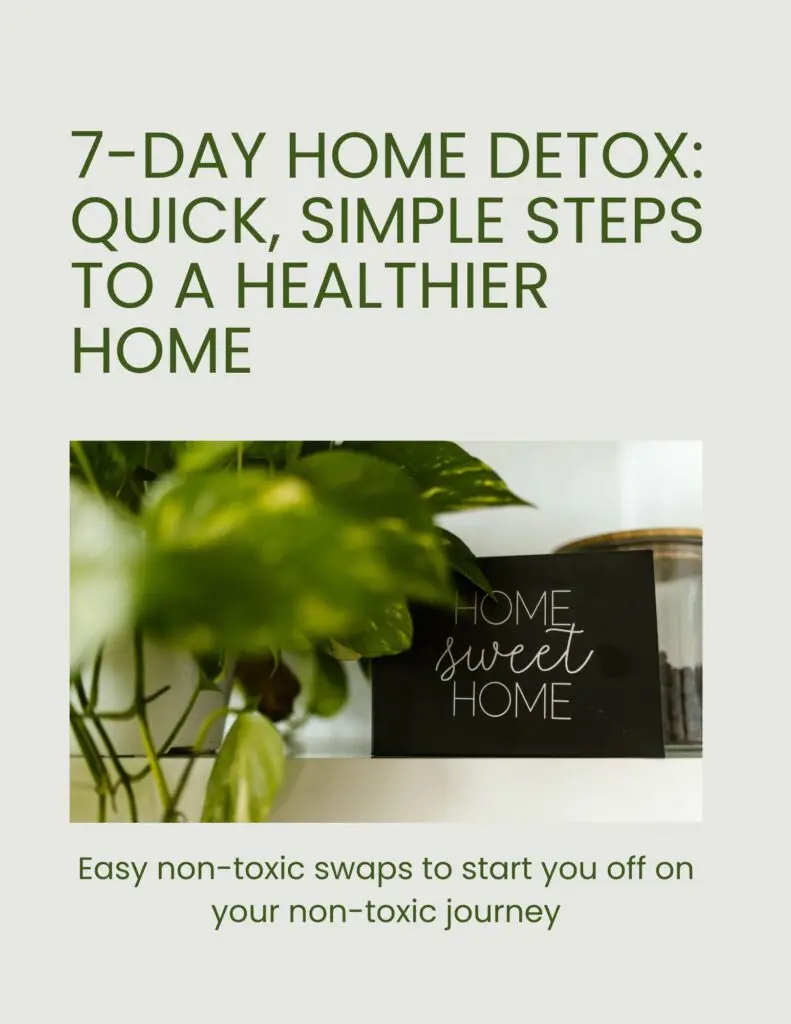
Where to Go from Here: Resources to Keep You Empowered
Your non-toxic journey doesn’t have to be a lonely one.
You can stay connected on social media Facebook| Pinterest | Instagram where I share daily tips, product recommendations, and encouraging messages to keep you inspired on your journey.
And if you’re looking for trustworthy, non-toxic products to add to your routine, my online shop is curated with only the best low-toxic and non-toxic items I personally use and recommend.
Get started:
– Follow on social media: Facebook| Pinterest | Instagram
– Shop Curated Non-Toxic Products.
Just so you know…the links that I share here are affiliate links. This means if you make a purchase from one of my recommendations, I may receive a small commission. This is at no extra cost to you!)


